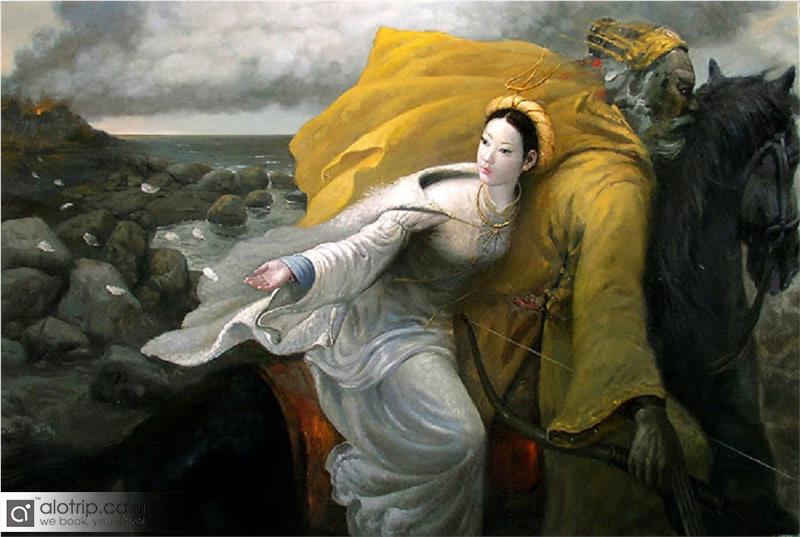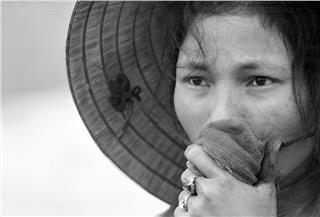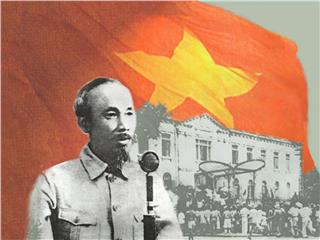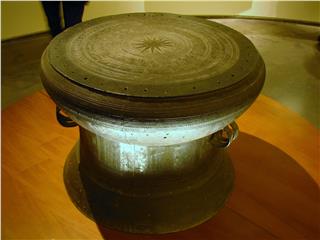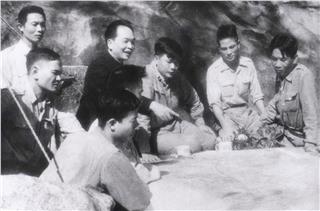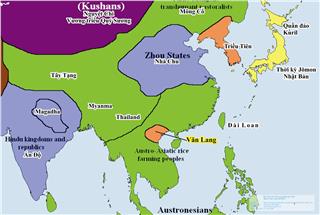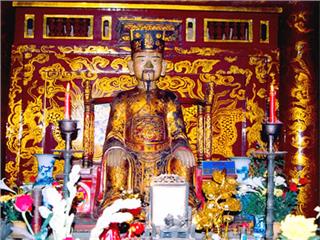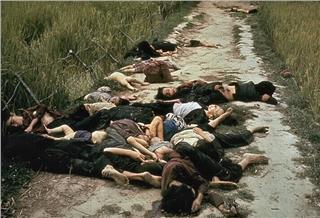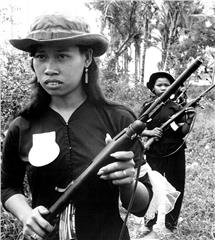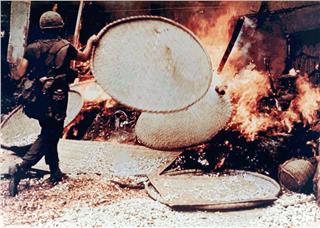From 111 BC to 938 AD, it is the Chinese domination of Vietnam. This is an important historic period proving the patriotism of Vietnamese people through typical revolts of Trung Sisters, Ly Nam De, Khuc Thua Du, and Ngo Quyen to regain autonomy.
In the second century BC, Vietnam history witnessed the domination of China. Chinese invaded Red River Delta. In 111 BC, the kingdom of Nam Viet was annexed. After that, a large number of Chinese people including ordinary people, mandarins and scholars moved to the south to live and impose the centralized state system to Vietnam. Although Au Lac people were lured into the annexation of the northern country, the domination was interrupted by uprisings of Vietnamese people during over 1000 years.
Northern dynasties of Zhou, Han, Wu, Jin, Tong, Qi, Liang, Chen, Sui, Tang, Hau Luong, and Southern Han conducted to plunder natural, human and material resources with a strict and sinister policy of domination in Vietnam. They massacred Vietnamese people, causing the damnation of Vietnam. Besides, they destroyed and confiscated the accomplishments of Dong Son Culture of Hung Kings’ Empire; implemented assimilation policy; eliminated cultural and traditional practices of ethnic Vietnamese people. In addition, Chinese forced Vietnamese people to follow Chinese rites and customs. In response to those oppressions, Vietnamese fought tenaciously. In one hand, they tried to preserve culture and ethnic norms, reinforce, absorb and assimilate positive economic and cultural factors of China, making a permanent foundation; on the other hand, they constantly rebelled to expel the invader from Vietnam, and regain autonomy.
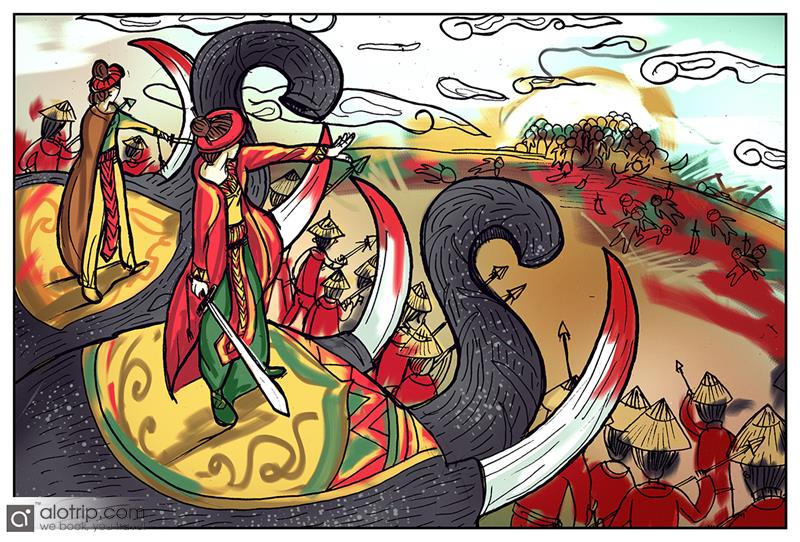
In 40 AD, Hai Ba Trung (Trung Sisters: Trung Trac and Trung Nhi) collected soldiers and prepared their arms to rise up against Southern Han. They rebelled to expel Chinese domination and liberate Nam Viet. Their revolt’s victory resulted in their accession to the throne. This rebel ended the first Chinese domination of Vietnam. However, in 43 AD, Chinese counterattacked. Rebellions of Trung Sisters during 3 years were suppressed. Could not stand being defeated, Trung Sisters committed suicide by drowning in Hat Giang River (Hat River). Then, there were many small-scale revolts against the cruel domination characterized by dictatorship, forcing labor, and insatiable tributes of China from the 3rd century to 6th century. Yet, all of these uprisings were ultimately suppressed. The second Chinese domination of Vietnam began in 43 AD. Lasting for about a half of century, this domination was brought to an end by a revolt of Ly Nam De who took advantage of internal disorder of China and the weakness of Liang Dynasty. The independence of Vietnam was just secured for 60 years until in 602 AD when Sui Dynasty reestablished control over northern Vietnam, starting the third domination. In late 9th century, taking advantage of the ruin of Tang Dynasty in China, a Vietnamese called Khuc Thua Du overthrew the Chinese domination of Vietnam by rising up against China and regaining independent period of Vietnam. In 938, Ngo Quyen, a patriot who led his arms and defeated Southern Han armada at the naval Battle of Bach Dang River. This battle concluded the fourth invasion as well as ended 1000 – year Chinese domination in Vietnam. However, this is not the last time Vietnamese battled with the powerful northern neighbor. After regaining the independence, Ngo Quyen established Ngo Dynasty with its capital in Co Loa.
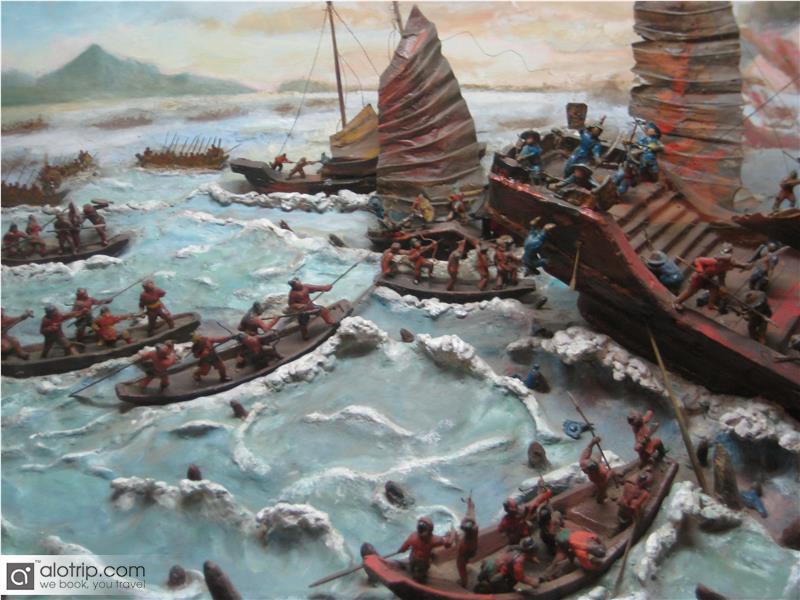
During Chinese domination period, Vietnam used to be an important port in the region, a bridge of sea routes between China and India. By these routes, religious forms of other countries such as China’s Confucianism, Taoism, and Buddhism were disseminated widely in Vietnam, while, Pre-Sectarian Buddhism (Primitive Buddhism) was spread by Indian. Monks, at this time, absorbed scientists and medical knowledge of the two prominent civilizations, leading to the appearance of talented doctors, botanists, and scholars.
Architecturally, China played its part in the construction of dykes and irrigation works in Vietnam. Ancient Vietnamese people learnt the architectural knowledge of Chinese and applied suitably in Vietnam. Changes in manipulating working tools and in Wet Rice Civilization were crucial in Vietnamese life, even until now. Foodstuff abundance, along with population growth led to the exploration of new lands. Getting difficulty in westward expansion as the western Truong Son Mountains Range, Vietnamese people went to the south to enlarge their country.
